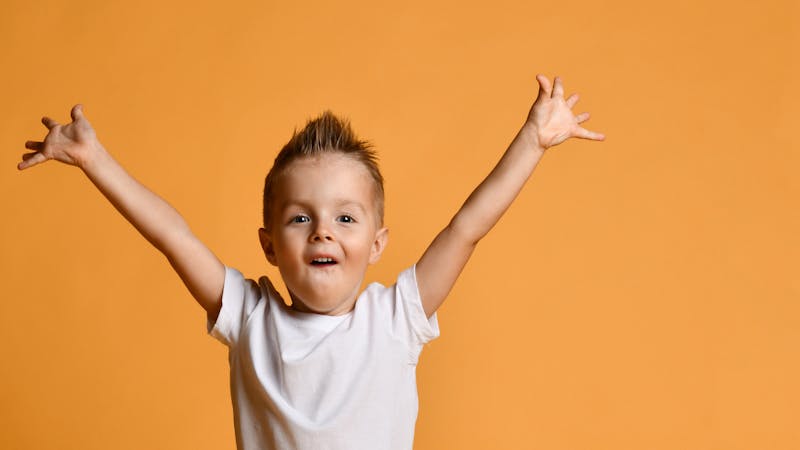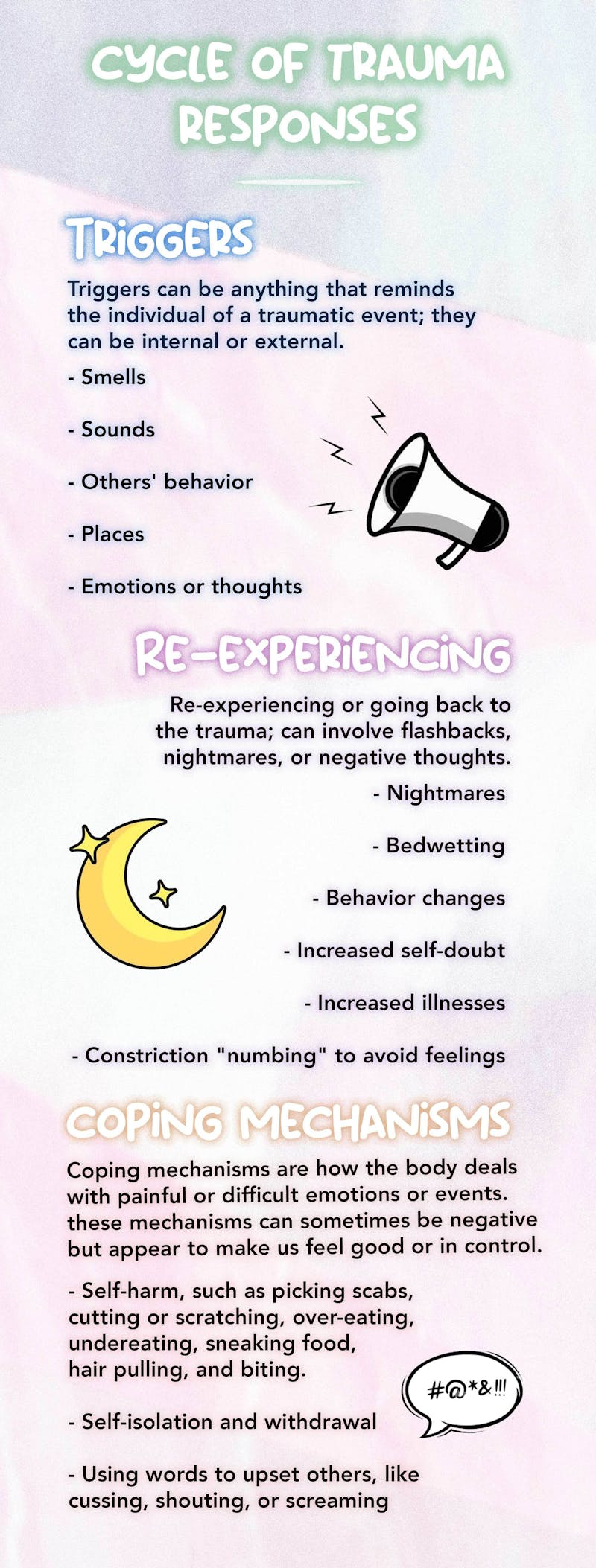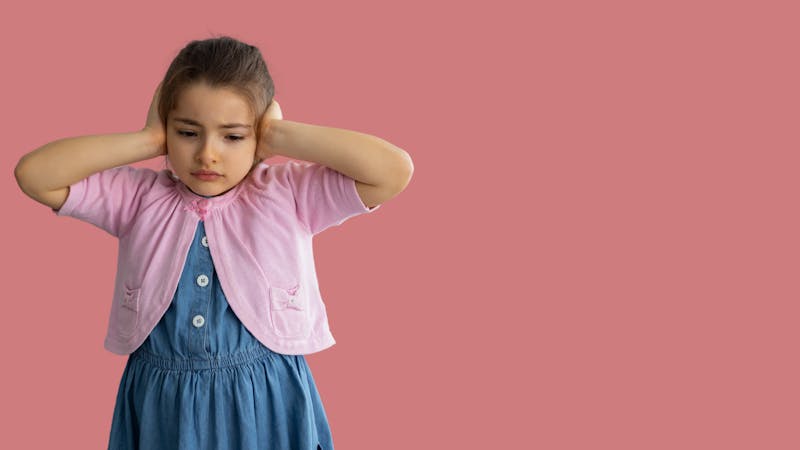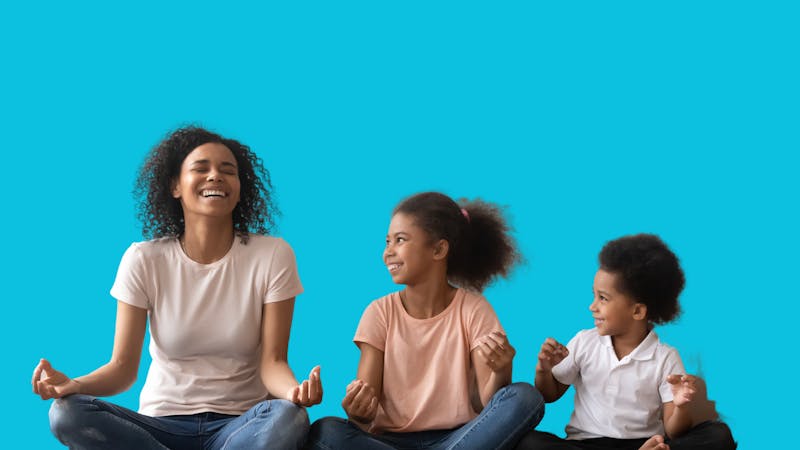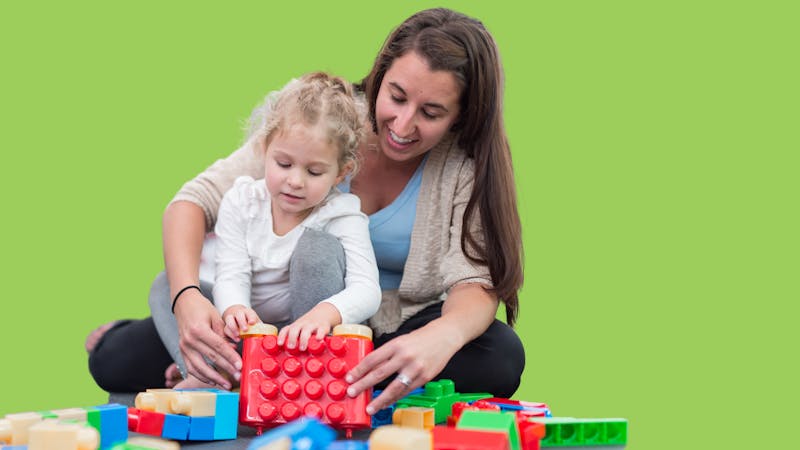Understanding the Impact of Child Traumatic Stress in Today’s World A comprehensive guide for parents, teachers, and guardians.

Here is a curated list of tools and resources to help your kids cope with traumatic events, build resilience, and deal with the cycle of trauma responses. Find out what child traumatic stress is, how it can manifest, and how to find and give support.
Traumatic events can profoundly impact children, leaving them feeling overwhelmed, anxious, and helpless, and even affecting them going into adulthood, causing negative reactions that cause childhood traumatic stress. As parents, teachers, and guardians, it is crucial to know how to support and help children understand these experiences and guide them toward mentally healthy futures.
What is The Cycle of Trauma Response?
The cycle of trauma is important for caregivers to understand trauma, traumatic events, and potential impacts. The cycle of trauma response refers to the patterns of behavior and emotions for individuals who have experienced traumatic events.
How can trauma stress manifest?
This cycle and traumatic experiences can cause physical and physiological changes in the body. When a person is experiencing trauma, the body’s stress response is activated, leading to the release of adrenaline and cortisol. Which can cause:
- Increase heart rate
- Change in breathing
- Being more aware of your surroundings
- Heightened sensitivity to potential dangers because of the perceived threat through the amygdala
- Flight, flight, freeze, or fawn trauma responses
This cycle is very personal, as what one person experiences may differ from another. However, there are some key similarities that parents, teachers, or caregivers can watch out for.
Note: remember that this is a list of possible trauma responses. If you are concerned about a child, please talk to a healthcare professional and follow the correct procedures.
What is Child Traumatic Stress?
Child traumatic stress, or CTS, refers to the psychological and physiological responses that can occur in children and young people who have experienced or witnessed a traumatic event. The traumatic stress response often comes from an upsetting or overwhelming event that challenges a child's ability to cope after the events have ended.
Identifying Symptoms of Childhood Traumatic Stress in Kids
It is extremely important that parents, caregivers, teachers, and people in a position of care understand how to identify how symptoms of CTS can manifest in traumatized children. Stress from trauma can appear differently depending on the individual and their age. However, this is a list of some symptoms and changes that you can watch out for, both mentally and physically.
Note: remember this is a list of possible symptoms; if you are concerned about trauma in children, please talk to a healthcare professional.
Physical Health Effects of Trauma on Children
- Headaches
- Stomach aches and other physical complaints.
- Trouble sleeping or oversleeping
- Experiencing nightmares or flashbacks
- Panic attacks
- Signs of self-harm like scratches, scabs, cuts
- Hair pulling
- PTSD
Mental Health Effects of Trauma on Children
- Strong emotional responses like anxiety, fear, overcautiousness, anger, shame
- Irritability
- Reduced self-esteem and self-belief
- Anxiety and depression
- Engaging in out-of-character behaviors
Behavioral Symptoms & Changes
- Changes in focus
- Change in ability to process information
- Difficulty with memory, attention, and functioning skills
- Increased risky behaviors
- Withdrawal
- Codependency
- Changes in needing approval from others or fears of disapproval
- Changes in the ability to make simple decisions, like what they want to eat
What Can Cause Childhood Traumatic Stress?
Child traumatic stress can be triggered by various events or experiences like intergenerational trauma, sexual or physical abuse, neglect, or world occurrences, all of which kids can perceive as overwhelming, frightening, life-threatening, or unsafe. Here are some triggers that can cause CTS in the world we live in today.
Global & National Events
Many emerging studies suggest that global events like COVID-19 have taken their toll on the mental health of our children because of family financial worries, enforced quarantines, school closures, lack of control, and the loss of loved ones. Other global traumatic experiences affecting kids' coping ability include the aftermath of 9/11, natural disasters like hurricanes, wildfires, floods, mass shootings, school shootings, and war, especially in a world where information is readily available.
Stressful Events & Life Changes
Kids are much more observant than we think and can pick up on events and emotions around them, whether consciously or not. This ability begins at around two years old. Therefore they are aware of the stressful events and life changes around them, even if they aren't actively participating. This trauma stress can be from but not excluded to moving around, leaving friends, divorce, domestic violence, abuse, breakups, loss, financial worries, changing schools, and bullying.
Sexual, Physical Abuse & Neglect
Kids who experience physical or sexual abuse are more likely to develop traumatic stress responses, resulting in but not exclusive to shame, guilt, and low self-belief, including PTSD and difficulty trusting others. Neglect, where a child's needs for supervision, food, shelter, attention, clothing, and medical care are unmet, can also cause CTS, especially if it is chronic and ongoing.
Grief & Loss
Losing a loved one or someone you know is especially hard for kids because they are still growing and understanding, making it more difficult for them to process grief, especially if they died unexpectedly or in a traumatic event.
Culture & Historical Trauma
Children can experience childhood traumatic stress in various cultural or historical contexts. Some examples could include growing up in poverty or social inequality, experiencing war, displacement, or migration. In some cultures, certain topics might be taboo or practices normalized. However, providing culturally sensitive support in these cases is very important.
Racial Violence & Discrimination
It's also important to recognize that historical trauma, such as the legacy of colonialism or systemic racism, can impact entire communities and families. Racial violence and discrimination, such as police brutality and hate crimes, can profoundly impact children's mental health and well-being, particularly for children of color and BIPOC.
Family and Intergenerational Trauma
Intergenerational trauma is the passing of trauma from one generation to the next. This kind of trauma can affect whole communities or individuals. Studies have researched whether intergenerational trauma can be passed on through genes by looking at whether the ancestors of Holocaust survivors are more likely to suffer stress.
Medical Trauma
Medical procedures or traumatic medical events can cause childhood trauma, especially if it's repeated or over long periods. Those with chronic illnesses as kids who have to be in and out of the hospital. As well as being separated from parents or caregivers, anxiety and fear of lack of control and body autonomy, pain, stress, and lack of understanding because of age and explanation.
Resources Guide for Parents, Teachers, and Carers to Support Children
So, how can parents, teachers, and carers help kids who have or show signs of childhood traumatic stress cope and build resilience skills while taking care of themselves simultaneously? Here are some examples of how word games, playful activities, building resilience tools, and resources that can be used to help kids cope, process, and deal with trauma.
Word Association Games
These word and letter games involve saying a word and having the child say the first word that comes to mind. This can help children make connections between their thoughts, feelings, and experiences.
Teach About the Window of Tolerance
The window of tolerance can be tricky for younger kids to understand, but adults can explain it with a simple analogy. To explain the window of tolerance to kids, you can use the example of a car. Like a car engine, our bodies and minds need to be in the right zone to work properly. For a kid-friendly explanation, you can check out Tracy Farrell's video reimagining the window of tolerance.
Storytelling
Encourage children to tell stories about their experiences or create stories with characters who face similar challenges. This can help them process their experiences and feel more in control of their narrative.
Play Therapy
This type of therapy with a mental health professional involves using toys and other play materials to create a safe and supportive environment for children to explore their emotions and experiences. This can be particularly helpful for children with difficulty discussing themselves and what they have been through. Some places to look for licensed professionals include the APT (US), PTI (International), or American Psychological Association.
Meditation & Breathwork
Meditation can be a helpful tool for kids to learn how to manage stress, anxiety, and other difficult emotions because it has been shown to reduce hormone cortisol levels. Keep it simple and relevant when teaching meditation skills and breathwork to kids. You can make it fun with guided meditations at bedtime or try the Headspace for Kids app.
Professional Help
If your child has experienced trauma leading to stress, it's important to seek professional help to ensure they receive the appropriate care and support. For a list of certified professionals who engage with child trauma work in the U.S., contact the National Child Traumatic Stress Network.
Lean on a Support System - Tools and Resources List for Adults
Helping kids navigate traumatic events can be especially difficult when adults find it difficult to understand the child's experience, as kids may not have the language or emotional maturity to express their feelings.
Another battle might be managing one's emotions, as stressful situations can be distressing for both adults and children, possibly bringing up triggers. All of this can bring up feelings of helplessness, anxiety, and guilt.
The Whole-Brain Child, by Daniel J. Siegel and Tina. B.P
A wonderful book for parents, educators, social workers, and caregivers from neuropsychiatrist Daniel J. Siegel and parenting expert Tina Payne Bryson offers a different approach to fostering healthy brain development and helping adults understand how a child's brain is wired and grows.
The National Child Traumatic Stress Resources
The NCTSN is a mental health provider project created from the 2000 Children’s Health Act. They work on raising standards of care and increasing access to services for children and families who experience or witness traumatic events. They offer user-friendly resources in English and Spanish and online e-courses for mental health professionals.
https://www.nctsn.org/resources/all-nctsn-resourcesSAMHSA Tips
If you are struggling with how to talk to a child after a traumatic event and need advice on what to say, SAMHSA has created this useful guide for educators and parents.
https://www.samhsa.gov/sites/default/files/tips-talking-to-children-after-traumatic-event.pdfBeacon House
Beacon House is a UK-based therapeutic service and clinic with a special interest in repairing the effects of trauma and attachment during challenging times. For educators and parents not UK-based, they offer tons of informative resources, gentle reminders for how educators can help students, as well as free animation videos based on mental health, early trauma, and behavioral therapy techniques.
https://beaconhouse.org.ukThe Therapeutic Parenting Podcast
Created by the Centre of Excellence in Child Trauma, this podcast of 27 episodes is a great resource for parents or caregivers with helpful advice on understanding childhood trauma and therapeutic parenting from real people and professionals.
https://podcasts.apple.com/gb/podcast/the-therapeutic-parenting-podcast/id1543689505Resources
- Fairbank, J. A., Putnam, F. W., & Harris, W. W. (2007). The prevalence and impact of child traumatic stress. In M. J. Friedman, T. M. Keane, & P. A. Resick (Eds.), Handbook of PTSD: Science and practice (pp. 229–251). The Guilford Press.
- SAMHSA - Recognizing and Treating Child Traumatic Stress- https://www.samhsa.gov/child-trauma/recognizing-and-treating-child-traumatic-stress
- NCTSN - Parenting in a New Context- https://www.youtube.com/playlist?list=PLmW1ACrTaZlOK-32JBLF0Wey1pz3OpnHT
- Perry, BD Neurobiological Sequelae of Childhood Trauma: Post-traumatic Stress Disorders in Children. In: Catecholamine Function in Post Traumatic Stress Disorder: Emerging Concepts (M Murburg, Ed.) American Psychiatric Press, Washington, DC, 253-276, 1994
- Thomson, H. (2023, August 15th) Study of Holocaust survivors finds trauma passed on to children's genes. The Guardian- https://www.theguardian.com/science/2015/aug/21/study-of-holocaust-survivors-finds-trauma-passed-on-to-children's-genes

About the author
Sarah Perowne
Sarah Perowne is a language and education specialist with over 10 years of experience in teaching and content creation. She has worked with students of all ages in various teaching methods, including those with disabilities and ASD. She sports an acute knowledge and skillset in teaching English as a second/foreign language (ESL) English Language Arts and creating content for online teaching resources, articles, and podcasts.
